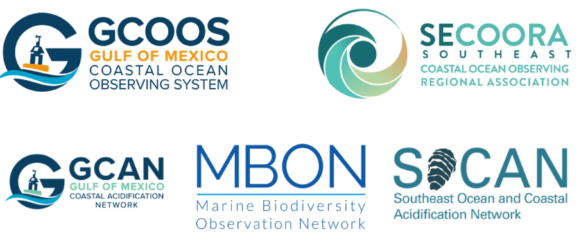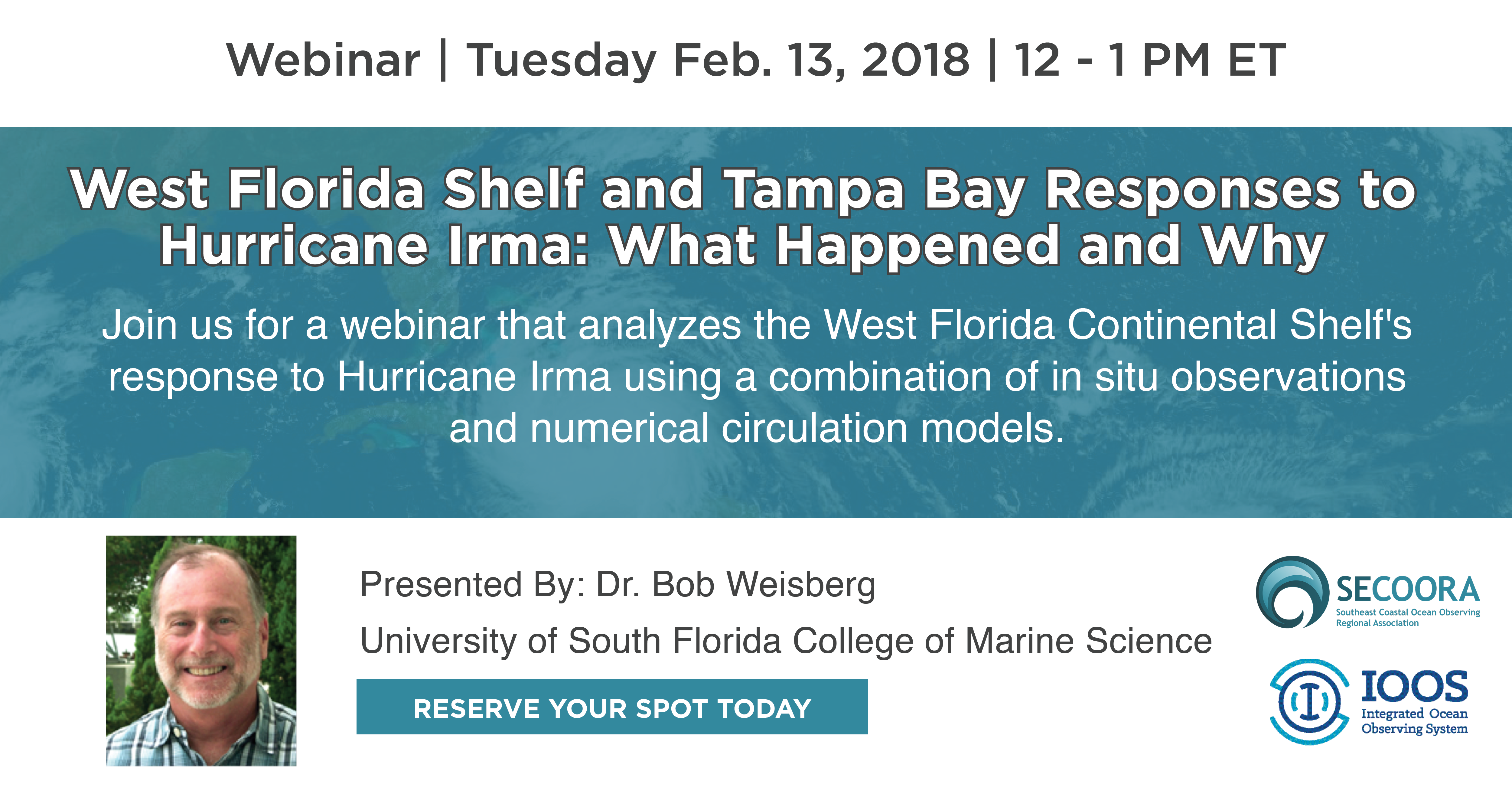Join SECOORA for a webinar that analyzes the West Florida Continental Shelf’s response to Hurricane Irma using a combination of in situ observations and numerical circulation models. More info below!
West Florida Shelf and Tampa Bay Responses to Hurricane Irma: What Happened and Why
Presenter: Dr. Bob Weisberg, University of South Florida College of Marine Science
Date: February 13, 12 PM ET
Hurricane Irma impacted the west Florida continental shelf (WFS) as it transited the State of Florida from September 10-12, 2017, first making landfall at Cudjoe Key and then again at Naples, as a Category 2 hurricane. The WFS response to Irma is analyzed using a combination of in situ observations and numerical circulation models. The observations include water column velocity, sea surface temperature, winds and sea level. The models are: 1) the West Florida Coastal Ocean Model (WFCOM) that downscales from the deep Gulf of Mexico, across the shelf and into the estuaries by nesting the unstructured grid FVCOM in the Gulf of Mexico HYCOM and 2) the Tampa Bay Coastal Ocean Model (TBCOM) that provides much higher resolution for the Tampa Bay vicinity (Tampa Bay, Sarasota Bay, the Intracoastal Waterway and all of the inlets connecting these with the Gulf of Mexico) by nesting FVCOM in WFCOM.
Both the observations and the model simulations revealed strong upwelling and vertical mixing followed by a downwelling as the storm passed by. This was accompanied by a rapid drop in sea surface temperature by about 4 degrees C and large decreases in sea level with negative surges causing drying in the Florida Bay, Charlotte Harbor, Tampa Bay estuaries and the Big Bend region. The transport and exchange of water between the shelf and the estuaries and between the shelf and the Florida Keys reef track during the hurricane have important ecosystem and sediment transport implications, including an inlet breach that occurred at the Pinellas Co. Shell Key preserve
About the Presenter
Dr. Robert Weisberg is a Distinguished University Professor of Physical Oceanography at the University of South Florida (USF). His current research emphasizes the West Florida Continental Shelf (WFS) and the interactions occurring between the shelf and the deep ocean and between the shelf and the estuaries. He maintains a coordinated program of in situ observations, analyses, and numerical circulation models aimed at describing and understanding the processes that determine WFS water properties, with applications to matters of societal concern. Dr. Weisberg is on the Board of Directors for the SECOORA and is a Fellow of the Southeastern Universities Research Association (SURA). Dr. Weisberg is a member of the Oceanography Society, the American Geophysical Union, the American Meteorological Society and Sigma Xi. He obtained his MS and PhD in physical oceanography in 1972 and 1975 from the University of Rhode Island.
Related news

GCOOS - SECOORA Joint Webinar Series: Building Synergy Across the US MBON & Ocean Acidification Networks
The GCOOS - SECOORA Webinar Series aims to strengthen collaborations across the Marine Biodiversity Observation Network (MBON) and regional Ocean Acidification Networks (GCAN and SOCAN).

New High Frequency Radar at the Dry Tortugas National Park Improves Ocean Surface Current Measurements Across the Straits of Florida
A new CODAR Low-Power SeaSonde HFR has been deployed by the University of South Florida at Fort Jefferson on Garden Key to measure surface currents to improve understanding and prediction of the Gulf of Mexico Loop Current.

President Biden Proposes Significant Budget Cuts to IOOS for 2025
President Biden’s recent 2025 budget proposal slashed the funding allocated for the Integrated Ocean Observing System (IOOS) by 76%, which would effectively shut down coastal and ocean observing efforts.
